This post may contain affiliate links. Please read our privacy policy.
Homemade Buttercream Frosting is one of the best basic recipes to have on hand. This classic recipe makes enough pillowy frosting for 24 cupcakes or a 9-inch layer cake.
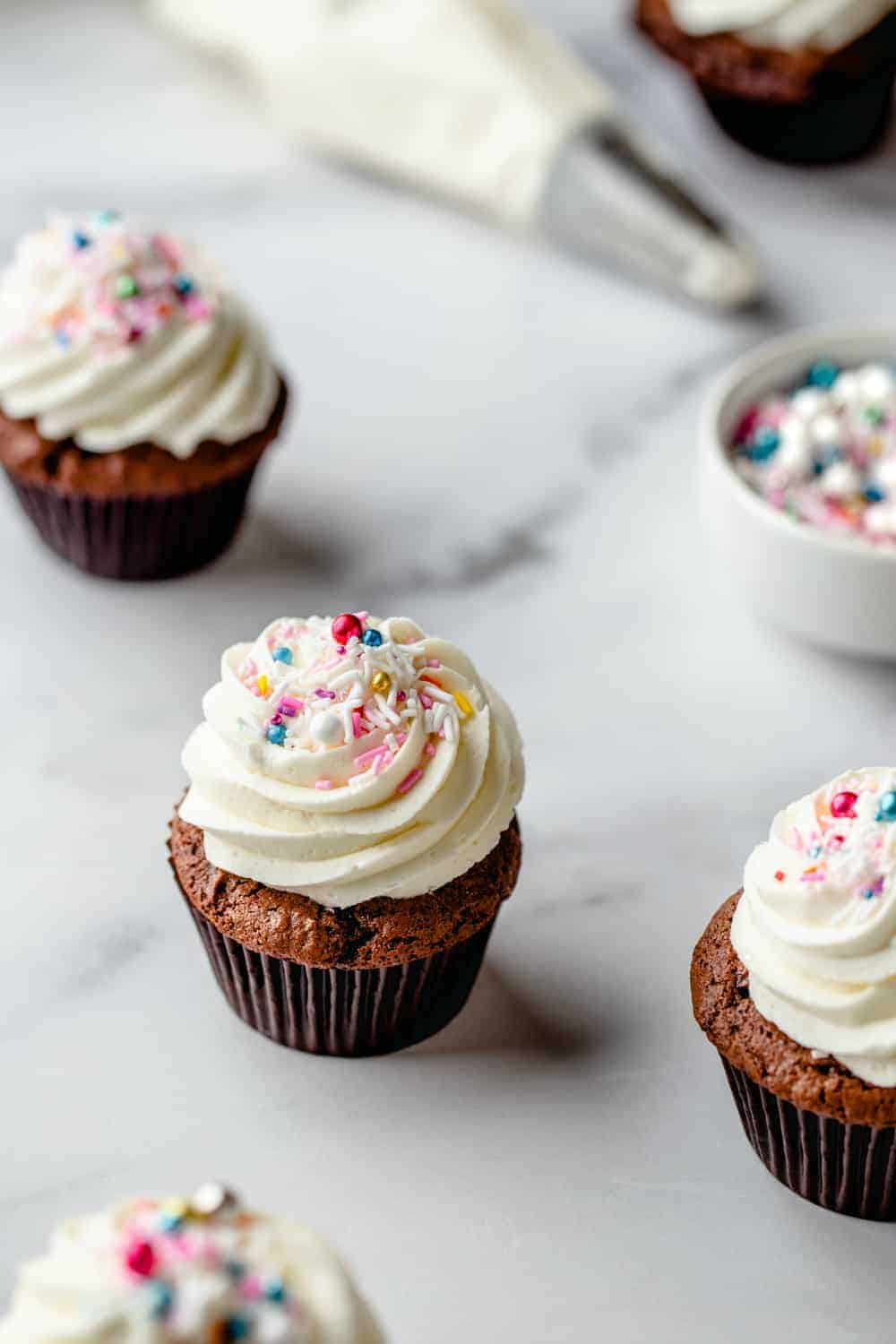
Of all the recipes on My Baking Addiction, this Homemade Buttercream Frosting is definitely the recipe that I make the most in my kitchen. In fact, it’s probably the most requested recipe amongst family and friends – well, maybe the second most requested next to My Favorite Chocolate Chip Cookies.
Whether I’m whipping up cupcakes, cake, or cookies, this Homemade Buttercream Frosting is the perfect way to top just about anything. As much as I love cream cheese frosting, this is the frosting recipe I keep coming back to time and time again.
I can’t tell you how many times people have said, “I could eat this with a spoon!” And I’ve actually made this for my aunt’s co-worker to do just that. She would put a serving in a little bowl and snack on it while watching her favorite TV shows.
Guys, it’s THAT good!
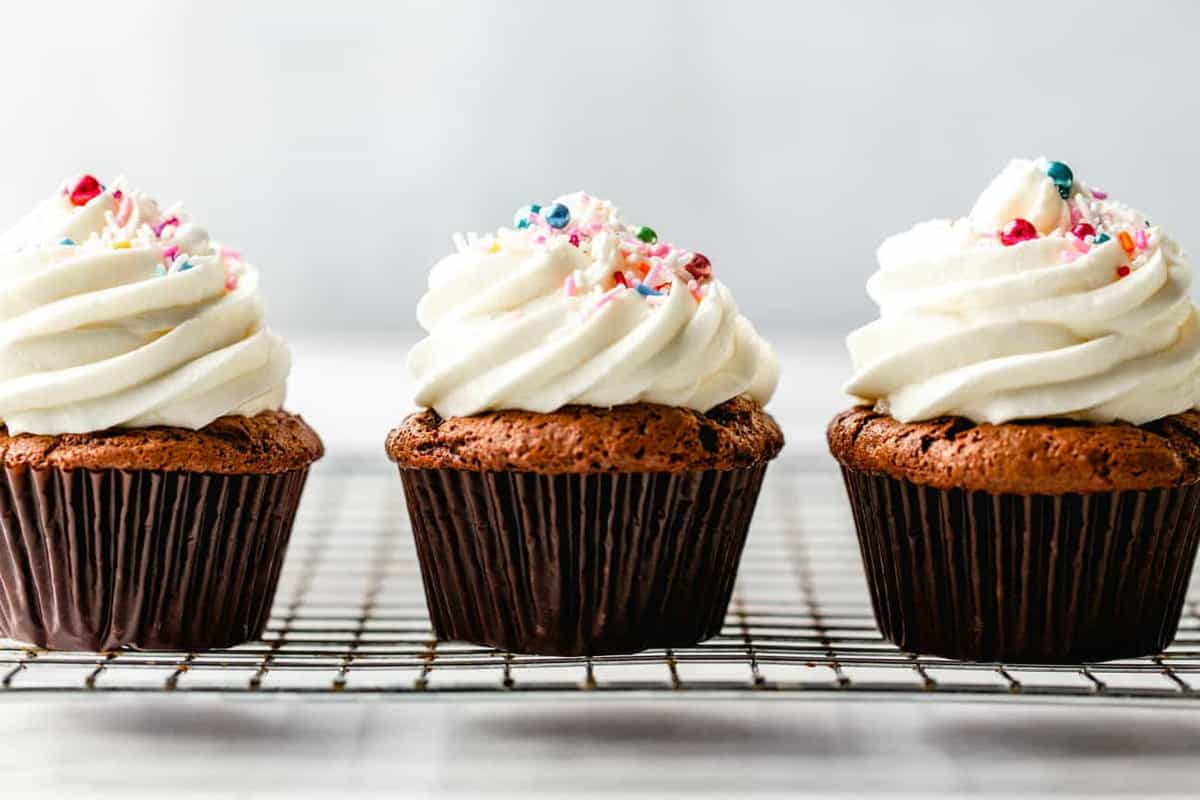
The best homemade buttercream frosting
One of the most common questions that I get from my readers is about buttercream frosting.
Although I have made several types of frosting recipes over the years, this Homemade Buttercream Frosting is by far my favorite due to its flavor, simplicity, and smooth texture.
This buttercream recipe can be infused with many different flavors to accompany your baked goods.
There are many variations of recipes for buttercream. And not just American vs Italian vs. Swiss meringue, etc. But even within American-style buttercream like this, there are all kinds of recipes!
For example, a lot of folks debate about using shortening versus using butter. I prefer using unsalted butter for the fat component because I find it to be less greasy than buttercream made with shortening.
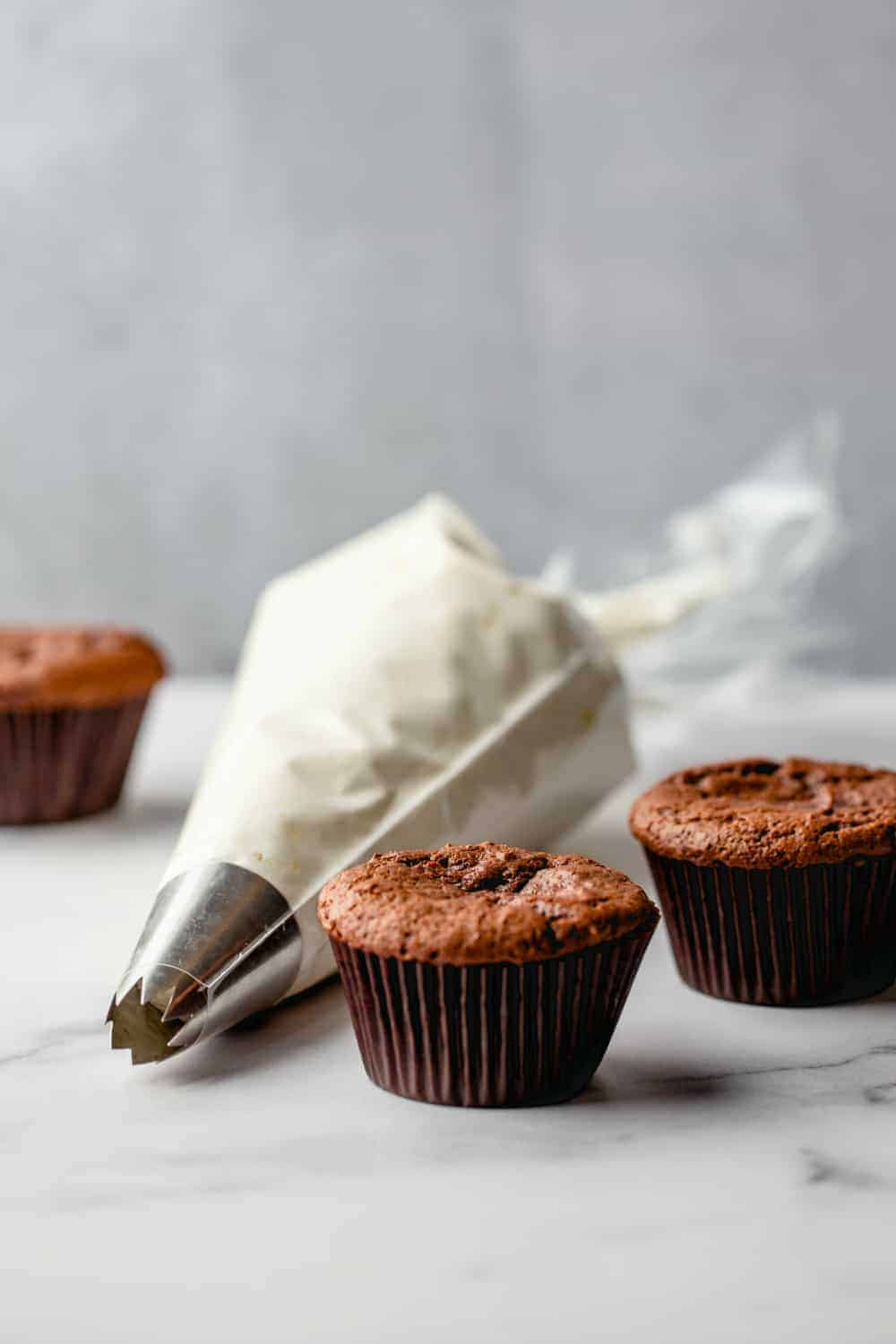
However, to each their own; if you’re a shortening fan, see the notes in the printable recipe card for this adaptation.
This frosting is extremely easy to pipe on 24+ cupcakes or a 9-inch layer cake and holds its shape very well.
It also flows easily through a variety of piping tips. My favorite tips are the 1M from Wilton, large round and large French tips.
With this basic buttercream recipe under your belt, you’ll be well on your way to creating cake and cupcake masterpieces.
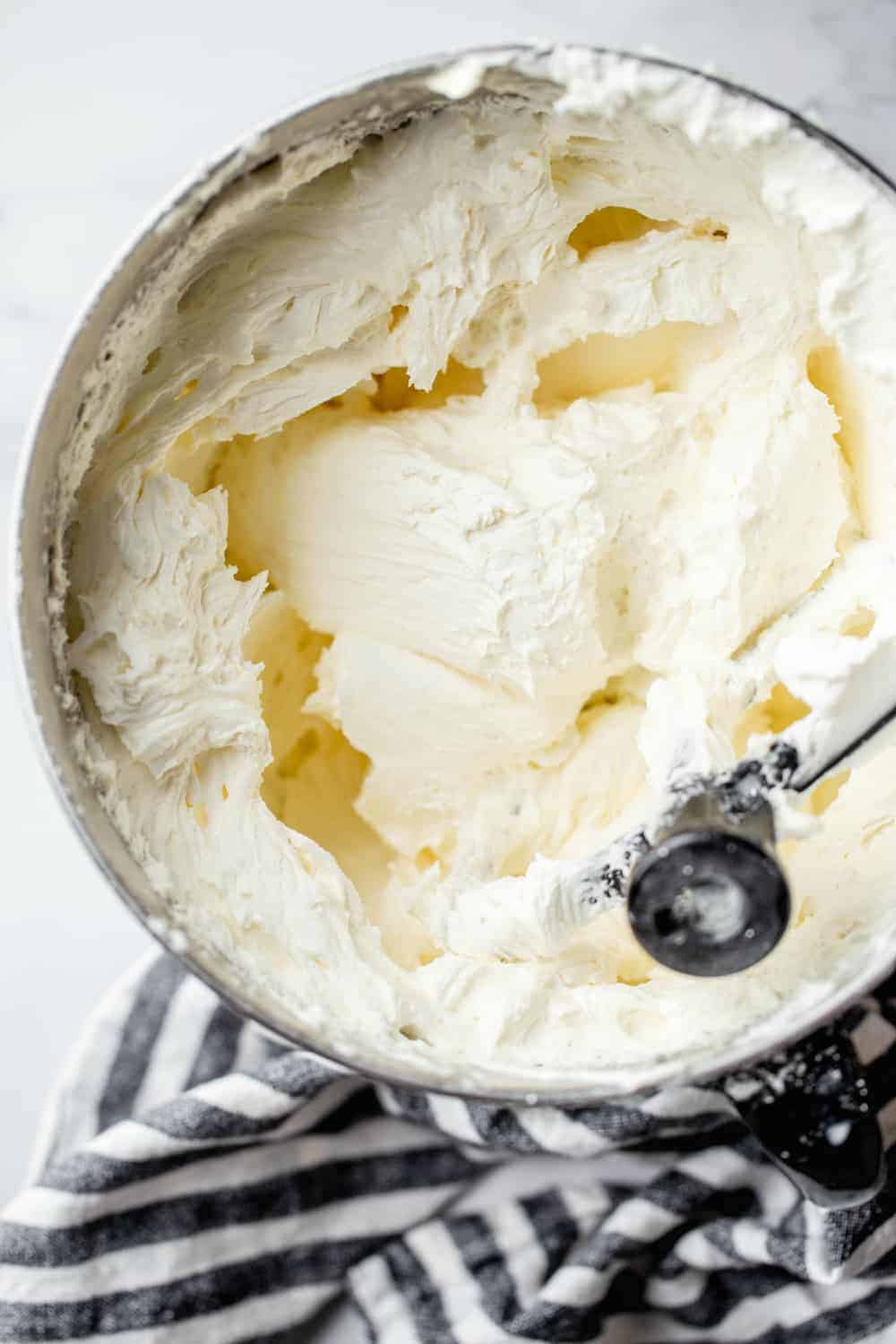
Different types of buttercream frosting
I mentioned there being multiple types of buttercream in the baking world, so let’s talk about them real quick:
American Buttercream Frosting – This buttercream is fast, simple and what you see on most grocery store cakes. It’s essentially fat (butter, margarine, shortening), confectioners’ sugar, and vanilla extract whipped together.
This recipe is for an American-style buttercream.
Swiss Meringue Buttercream – Swiss meringue buttercream is made by cooking egg whites and sugar together in a bowl placed on a pot of boiling water.
The mixture is continuously whisked while it reaches 140° F. The egg white and sugar mixture is then removed from the heat and whipped at high speed until it forms stiff peaks and has cooled.
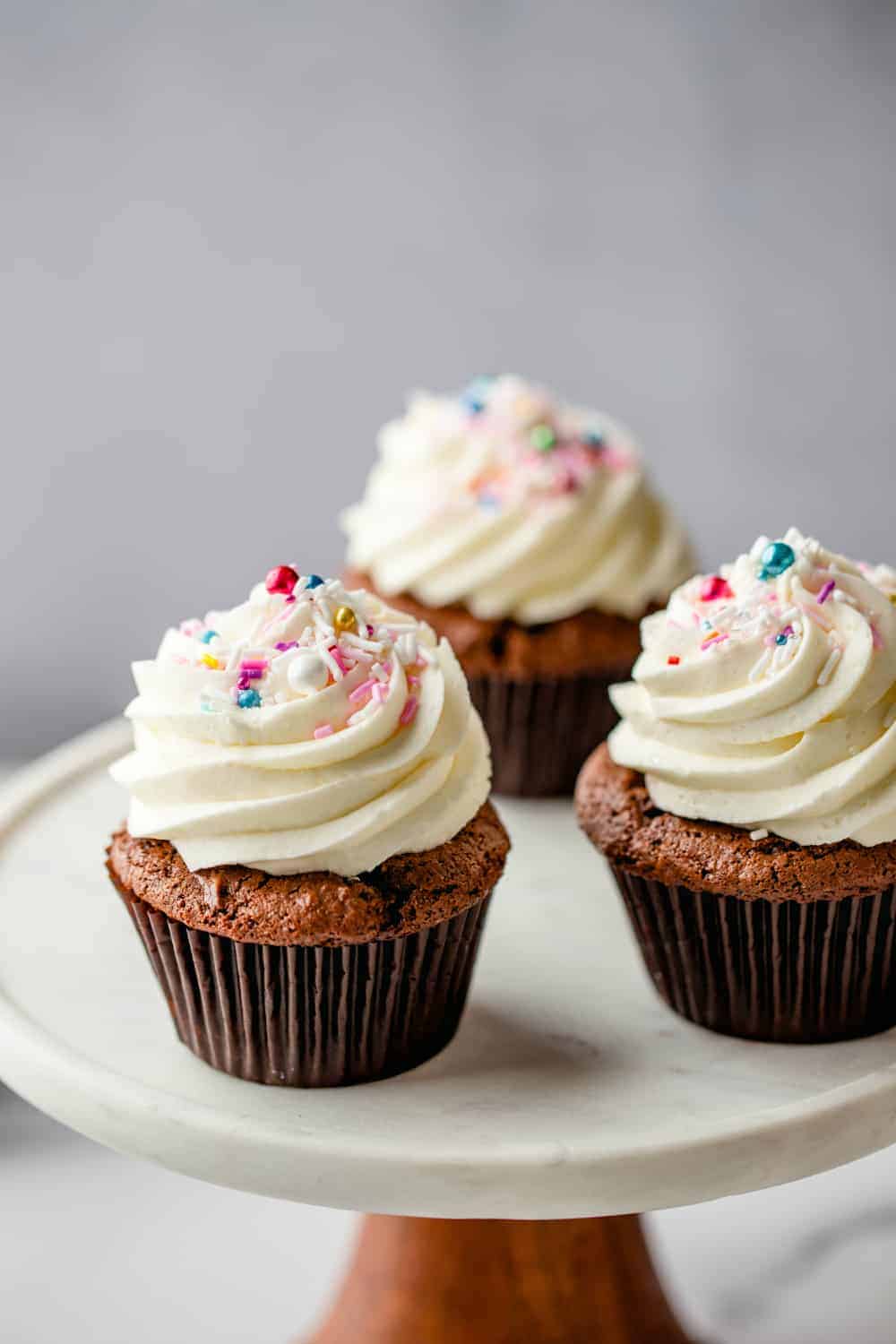
Italian Buttercream – Italian buttercream is made by whipping eggs whites with sugar syrup and butter. Before adding the syrup to the egg whites, it is cooked to the soft-ball stage (240 degrees F).
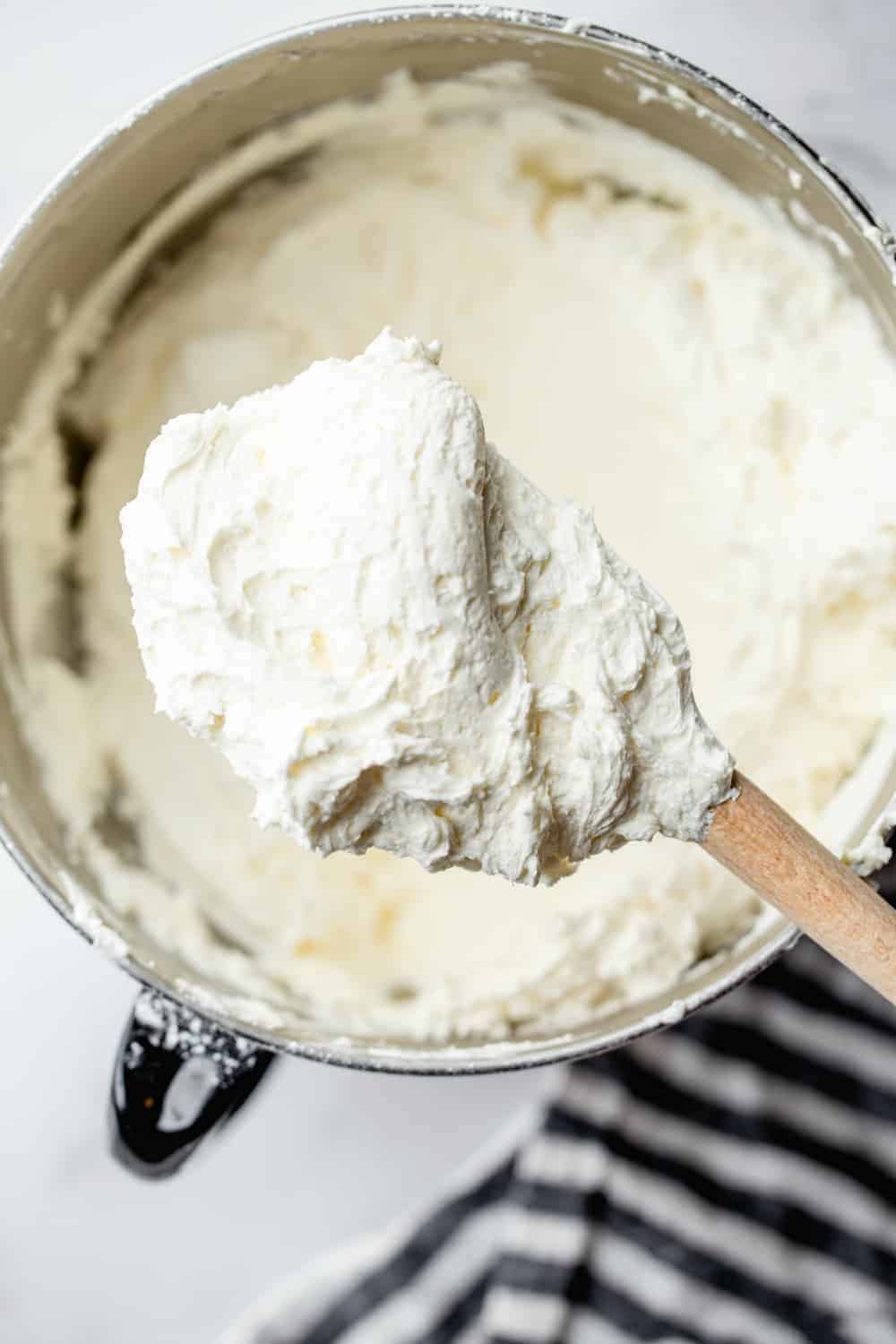
How to make buttercream frosting
Our Homemade Buttercream Frosting is so easy to make, you’ll wonder why you ever bothered buying frosting.
Ingredients you’ll need
The ingredients for your homemade buttercream are pretty simple. For a full batch of this frosting (enough to frost 24 cupcakes or a 9-inch layer cake), you will need:
- 1 ½ cups softened unsalted butter
- Tiny pinch fine sea salt
- 1 ½ pounds powdered sugar, sifted
- 1 tablespoon clear vanilla extract
- 2-3 tablespoons heavy cream or milk
Sift your powdered sugar for the smoothest frosting. I also recommend weighing it instead of measuring it by volume.
Powdered sugar compacts easily, and when you’re using such a large amount in a recipe, it can be easy to throw off the balance of your frosting when you scoop it instead of weighing it.
I like to use clear vanilla in my frosting to keep it a bright white, although I will occasionally use pure vanilla extract, especially if I am going to be adding food coloring anyway.
You can use cream or milk in this recipe. I don’t really have a preference; I will use whichever I happen to have on hand! Both work great.
Making this recipe
All you need to make buttercream frosting is a big bowl, an electric mixer, and a rubber spatula. If you are using a stand mixer instead of a hand mixer, I recommend using the paddle attachment.
First, make sure your butter is softened. (Don’t worry if you didn’t set it out ahead of time – check out my guide for how to soften butter to figure out how to soften it in a jiffy!)
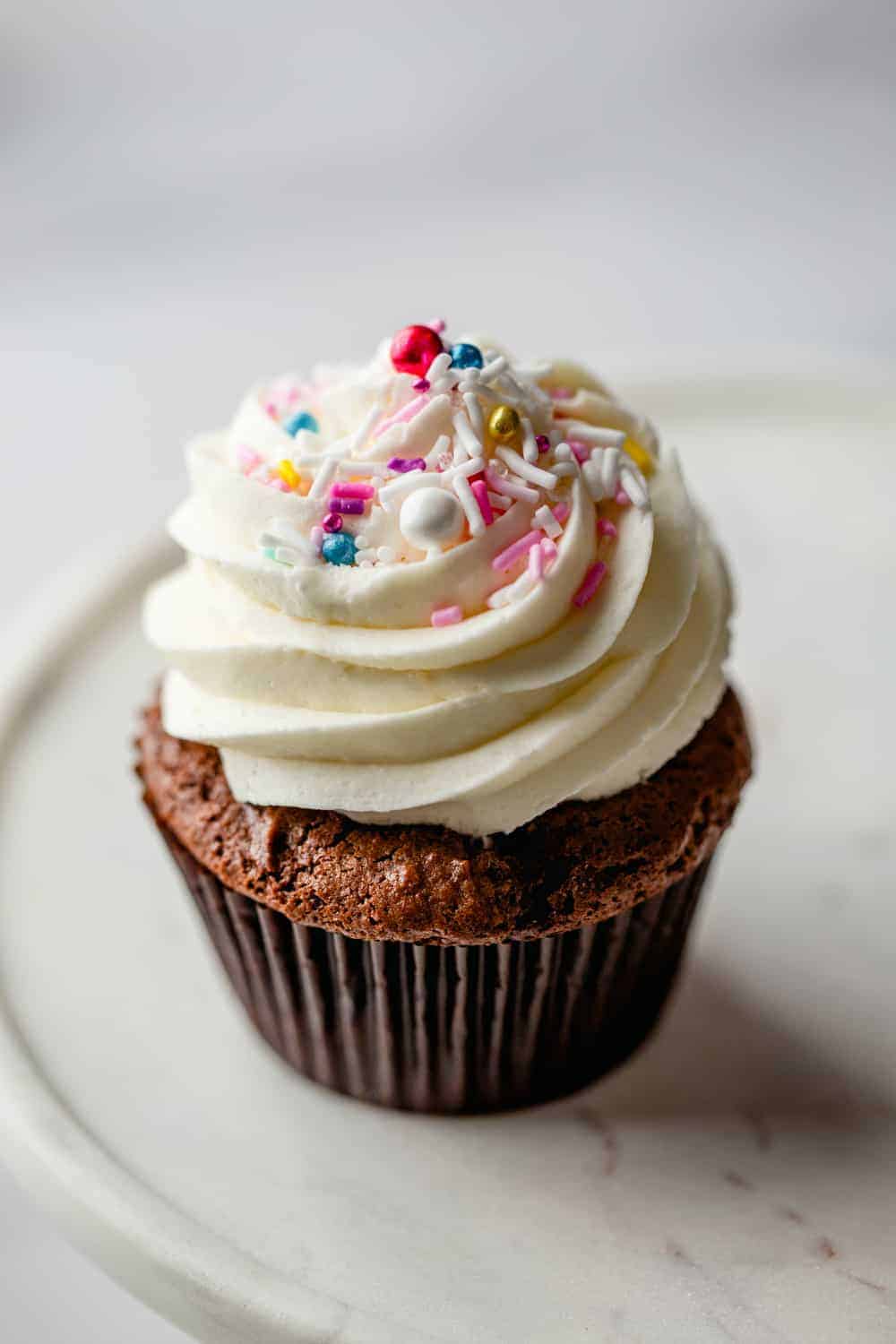
Cream the butter until it is fluffy. This is really the most important step in this entire recipe. I often set a kitchen timer for 6-7 minutes and just let my stand mixer do all of the work.
Then add in the salt and slowly add in the powdered sugar, continuing to beat the mixture until it is well blended.
Add in the vanilla and cream or milk and beat on low speed until combined.
Once the vanilla and cream or milk are incorporated, I’ll turn up the speed to medium-high and set another timer for an additional 6-7 minutes. This will ensure your Homemade Buttercream Frosting is ultra-fluffy and creamy.
You can add additional cream or milk if you want a softer consistency, but I recommend adding it just a couple of teaspoons at a time until it’s just right.
It’s ready to use or store for later!
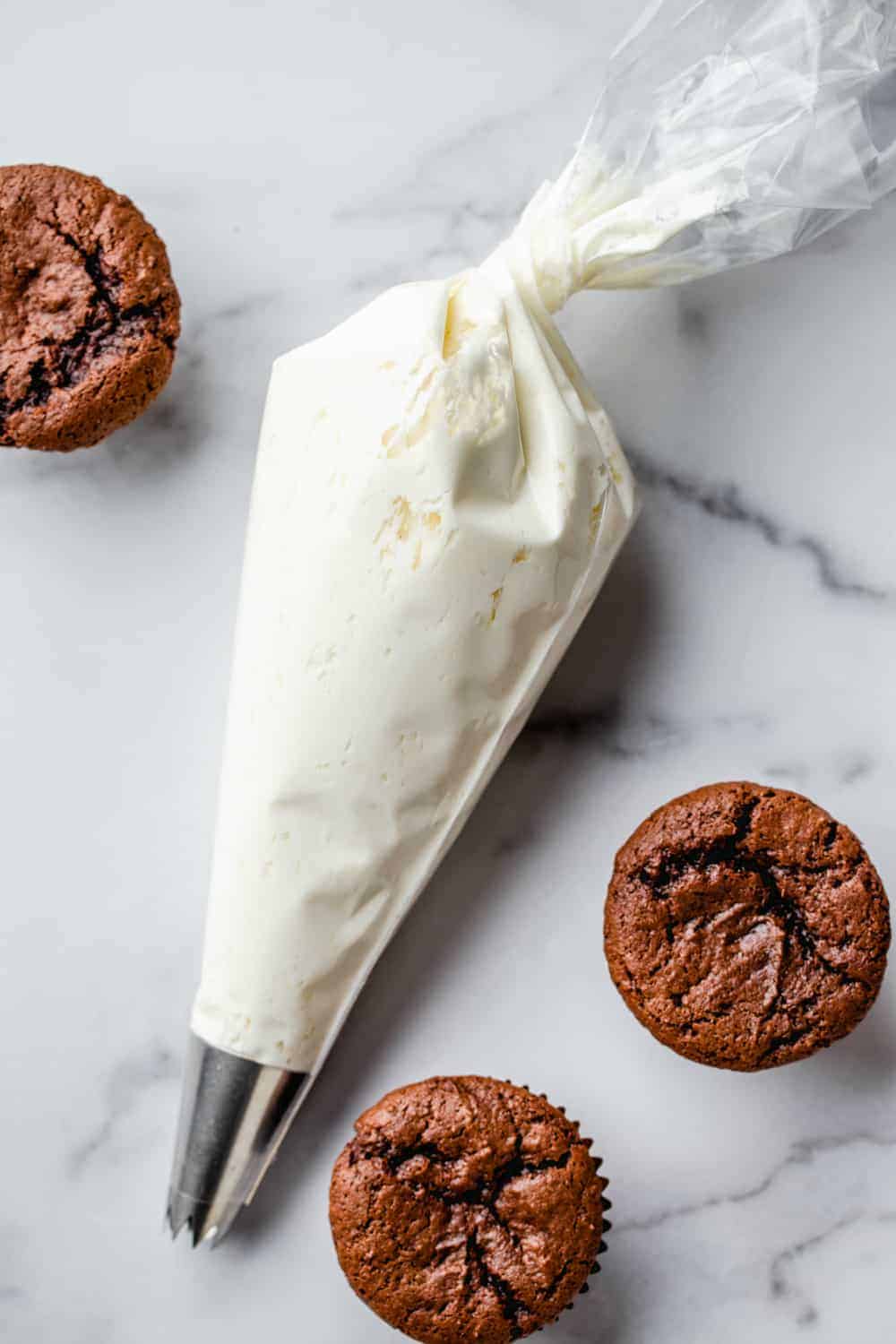
Flavoring options
One of the best things about knowing how to make buttercream frosting is being able to make your own flavored buttercream!
There are lots of different ways to flavor this recipe. Of course there is always the classic vanilla extract, vanilla paste or vanilla beans. You guys know I am obsessed with vanilla everything and always use pure vanilla extract; however, this buttercream is the exception.
More often than not, I turn to Wilton’s Clear Vanilla Extract for this recipe. It keeps my homemade buttercream frosting super white and has the perfect, yummy, creamy vanilla flavor that is simply my favorite in buttercream.
You can also use any other flavor extract you like, such as peppermint extract.
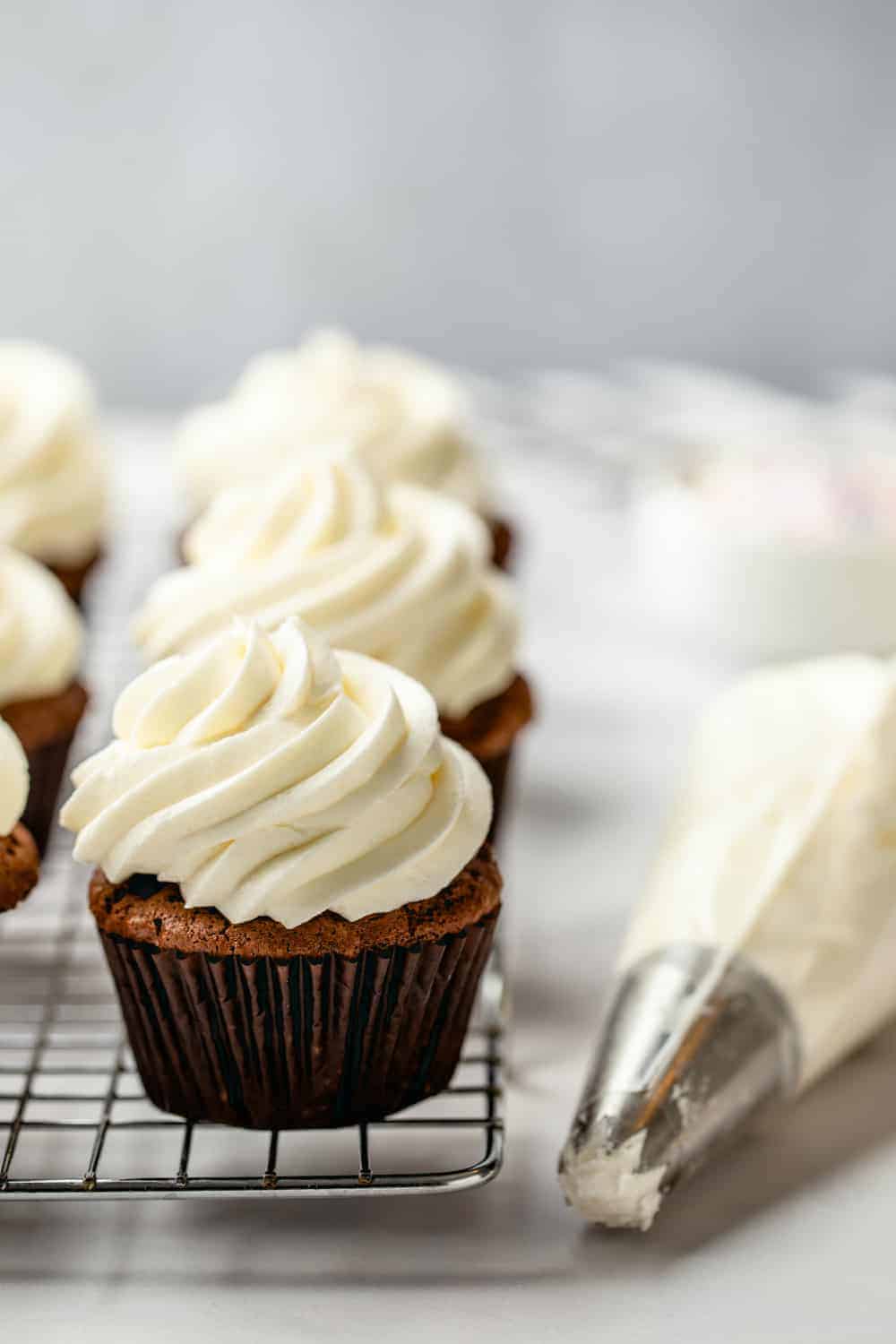
For any citrus flavors, I like to reach for fresh citrus zest or juice. Even though lemon is the most common, you could try lime, orange, or grapefruit instead. I used both lemon and lime for Lemon Lime Cupcakes.
We can’t forget chocolate – you can add cocoa powder and melted chocolate to turn this into chocolate buttercream like I used on Mint Chocolate Chip Cupcakes.
You could even try fresh fruit puree (like I did with my strawberry frosting and Lemon Blueberry Buttercream), jam, curd, or even salted caramel sauce.
And don’t forget about brown butter! My brown butter frosting is a perfect example of the magic that happens when you brown the butter for this recipe.
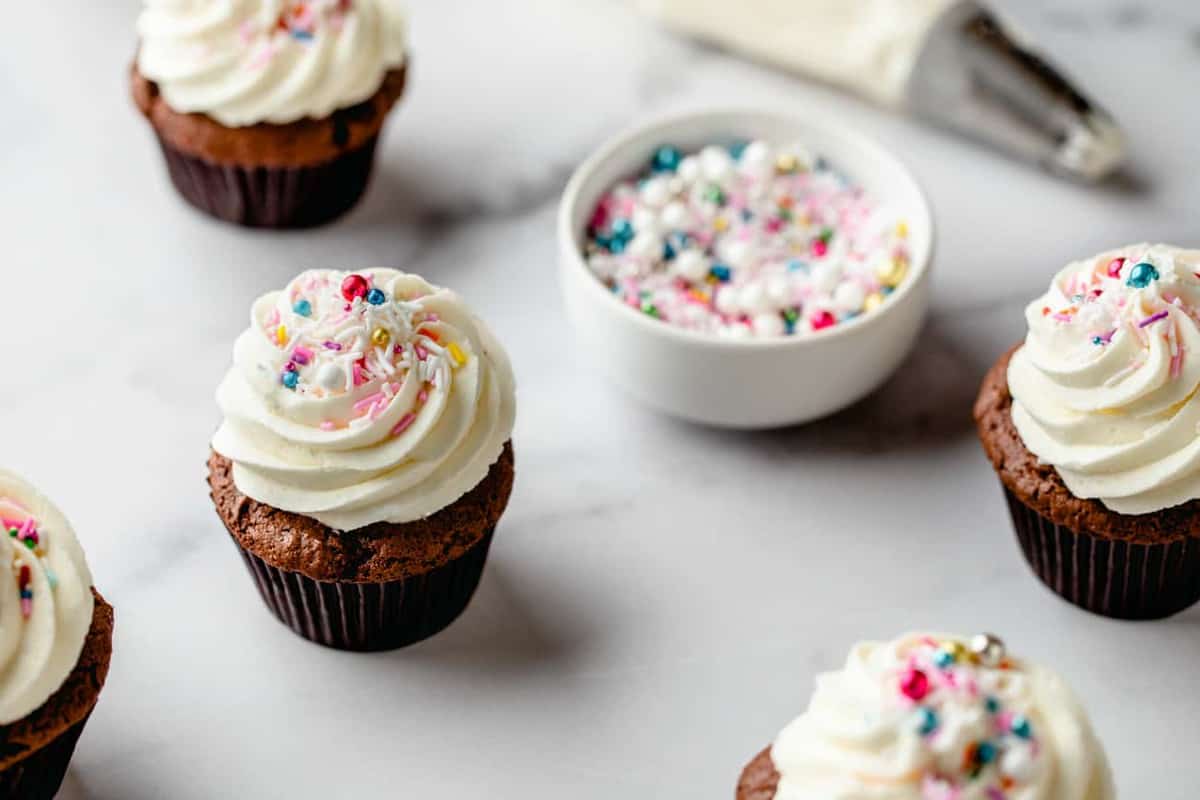
Uses for this frosting
There are a million different ways to use homemade buttercream. The most obvious is for frosting cakes or cupcakes. This recipe will make enough frosting to generously cover 24 cupcakes or a 9-inch layer cake.
You can also put your homemade buttercream inside your cupcakes! Try using one flavor as a cupcake filling and a second flavor on top.
If you’ve never filled cupcakes before, I have a whole post that walks you through the easiest ways to fill cupcakes.
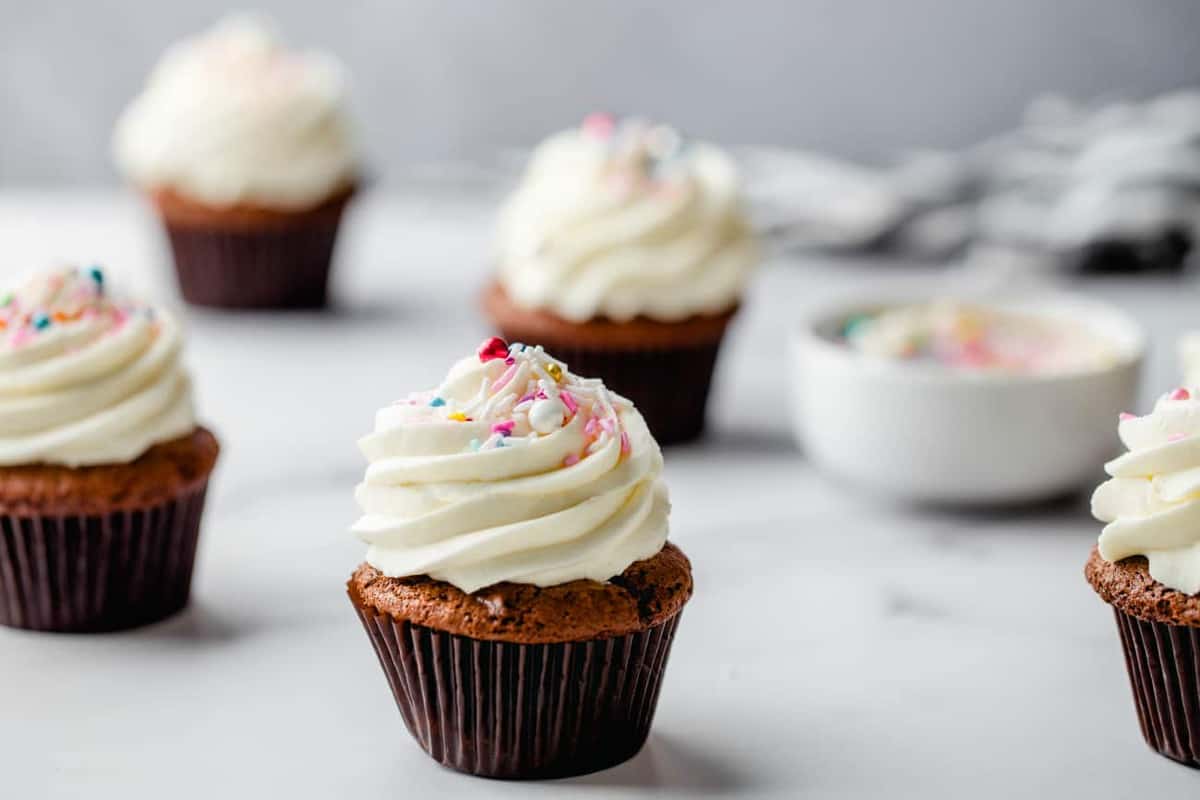
It also makes a fantastic filling for sandwich cookies. Homemade Oatmeal Cream Pies are perfection thanks to a buttercream filling.
Really, Homemade Buttercream Frosting can be used for anything that has frosting on top! Think Halloween rice krispie treats, for example.
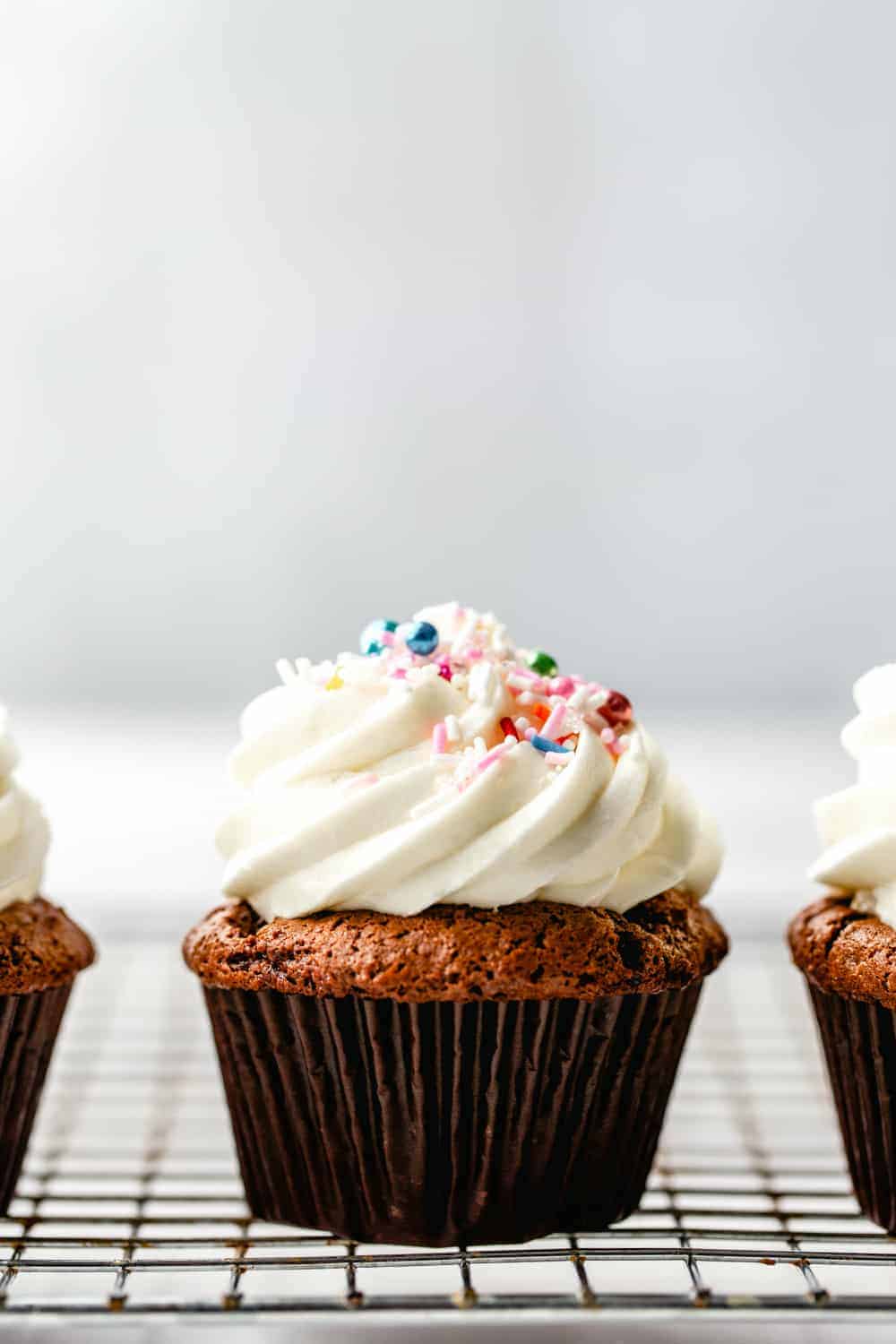
Storage tips
Homemade Buttercream Frosting can be made a few days ahead of time, so it’s easy to prepare before a party and pipe onto a cake or cupcakes the day of.
Cover and refrigerate the frosting for up to three days. When you’re ready to use it, simply bring it to room temperature. Beat it for about 5 minutes with a mixer or until smooth.
You may need to add a splash of cream or milk to revive the consistency before piping.
Can you freeze this frosting?
Extra buttercream frosting can also be frozen for longer-term storage.
Place the buttercream in a freezer-safe airtight container. Sometimes I will also place a layer of plastic wrap on the top of the frosting for extra protection. Freeze for up to a month.
Let the frosting thaw in the refrigerator overnight. Before using, let it come to room temperature and beat it with your mixer for about 5 minutes or until nice and smooth. Add a splash of milk or cream if needed.
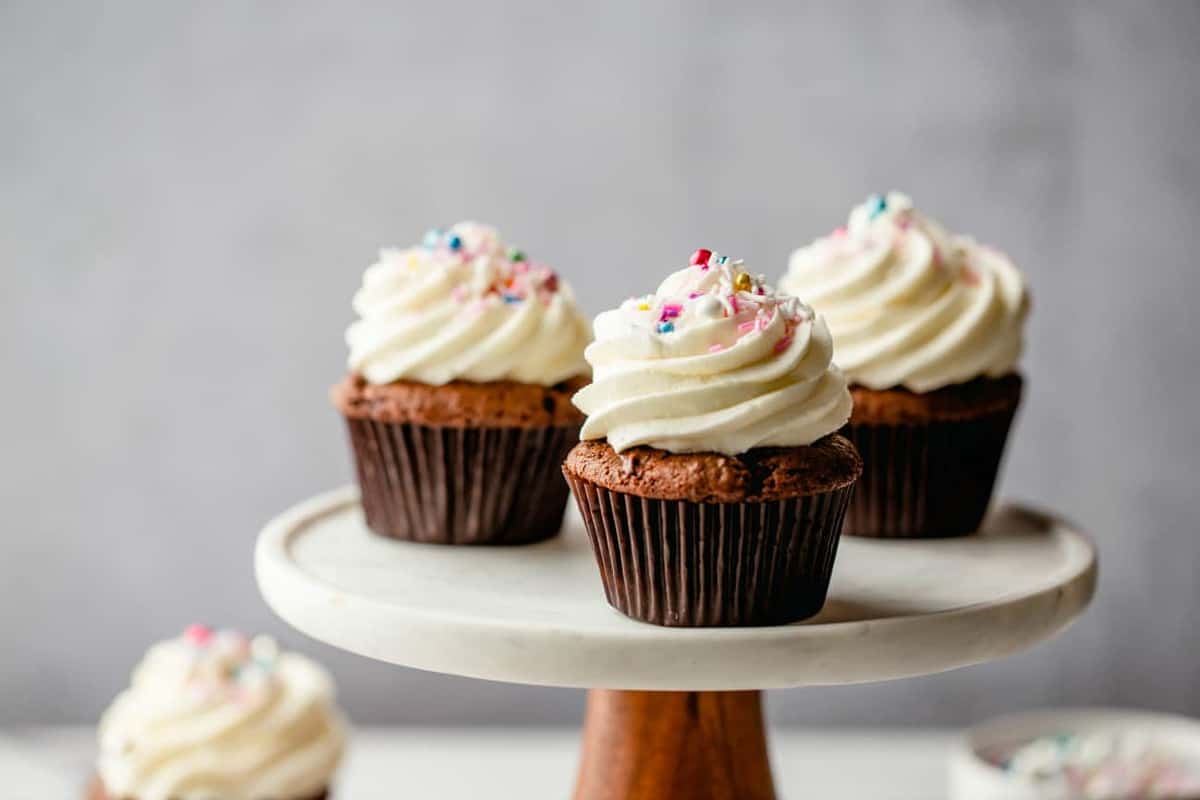
Frequently asked questions
Absolutely. I prefer gel food coloring. Start with a couple of drops and add more if needed.
Place the buttercream frosting in an airtight container with a layer of plastic wrap pressed against the top of it. Freeze for up to a month.
When you’re ready to use it, let it thaw in the refrigerator overnight. Once thawed, bring the frosting to room temperature, then whip it with a mixer for about 5 minutes.
Add a splash or two of milk or cream if needed to further revive the consistency.
American-style buttercream, which is what this recipe is, is typically pretty sweet.
I have had several readers say that they have reduced the amount of sugar in this recipe and loved the results. Keep in mind that this will increase the butter-to-sugar ratio though, so the frosting may feel more “buttery” if you cut down on the sugar.
If you are a fan of shortening in your homemade buttercream, simply replace 1/2 cup of the butter with 1/2 cup shortening.
Once piped or spread onto your cake, cupcakes, or cookies, this buttercream will crust up. If you want to add sprinkles or other decorations, make sure to do that right after piping it on, before it has a chance to form a crust.
Even though it crusts up, it won’t completely harden. Be careful if storing or transporting baked goods decorated with this frosting so that you don’t smash your beautiful decorating work.
This recipe holds up great at room temperature. But it will definitely start to droop or melt if it gets too hot.
If you’re taking this frosting to an event without air conditioning or where it’ll be in the sun (such as a summer cookout), I suggest keeping the cake/cupcakes chilled until ready to serve.
Yes, this buttercream frosting holds up really well as a thick coating on cakes or for piping decorations. You can also adjust the thickness of the frosting by adding less or more milk/cream to suit your decorating needs.
If you only have salted butter on hand, omit the salt in the recipe.
Homemade Buttercream Frosting
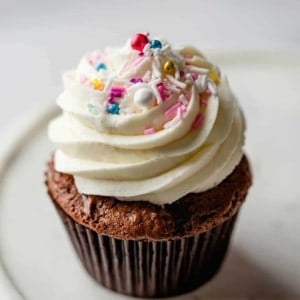
Ingredients
- 1 ½ cups unsalted butter softened
- Tiny pinch fine sea salt
- 1 ½ pounds powdered sugar 24 ounces; sifted
- 1 tablespoon clear vanilla extract (this helps maintain the bright white color)
- 2-3 tablespoons heavy cream or milk
Instructions
- In the bowl of a stand mixer fitted with the paddle attachment, beat the butter on medium-high speed for 6-7 minutes.
- With the mixer on low speed, slowly add in the salt and powdered sugar, and continue beating until the sugar is fully incorporated.
- Add in vanilla and cream or milk and mix on low speed until incorporated.
- Turn the mixer back up to medium-high speed and beat the buttercream for an additional 6-7 minutes.
- If the buttercream is too thick, add in a bit of milk, one teaspoon at a time until you reach the desired consistency.
Video
Notes
- This recipe will make enough frosting to generously frost 24 cupcakes or one 9 inch layer cake.
- You can easily adjust the consistency of this recipe by simply adding in more heavy cream or milk.
- If you are a fan of shortening in your buttercream, simply omit one stick (1/2 cup) of butter and replace with 1/2 cup shortening.
- Clear vanilla extract is used in this recipe to keep the frosting nice and white. If you don’t mind a slight color change, feel free to use pure vanilla extract, but decrease the amount to 2 teaspoons.
- Covered and refrigerated frosting can be stored for up to three days. Simply bring it to room temperature and beat with an electric mixer until smooth. You may need to add a couple of teaspoons of heavy cream or milk to revive the consistency. Frosting can also be frozen for up to a month.
- If you choose to dye your frosting, go easy with the dye. Remember, you can always add more color, but you can’t remove it.
- If you garnish with sprinkles, make sure you do this immediately after you frost your baked goods. Once the top layer of the buttercream crusts, nothing will stick.
- Learn how to make powdered sugar for those times when you have run out but still want frosting!
Nutrition
Nutrition information is automatically calculated, so should only be used as an approximation.
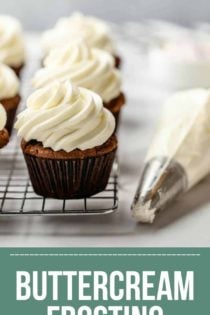
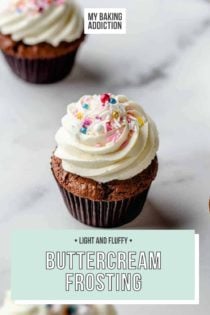

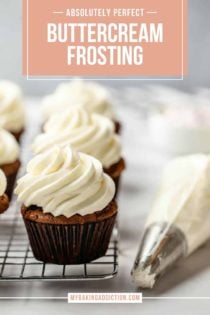
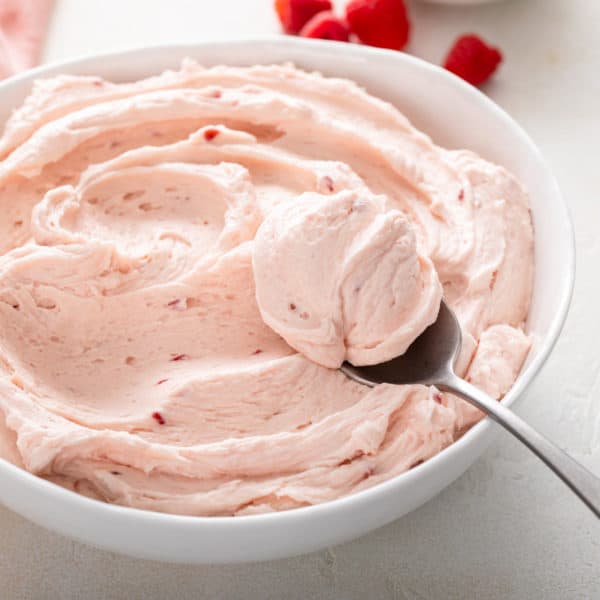
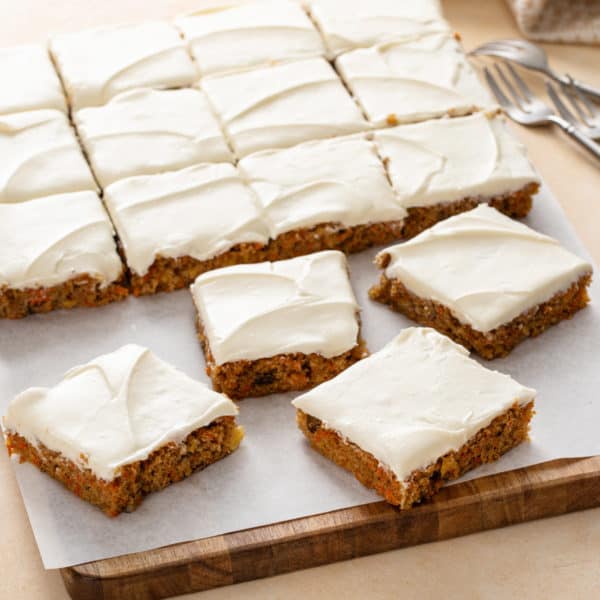
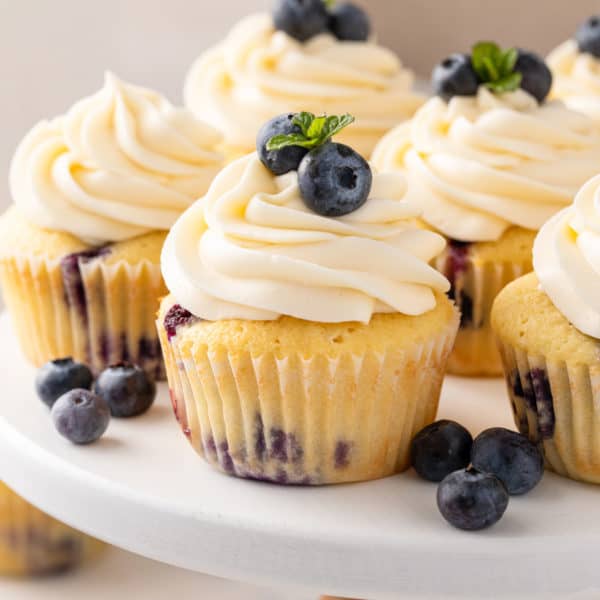
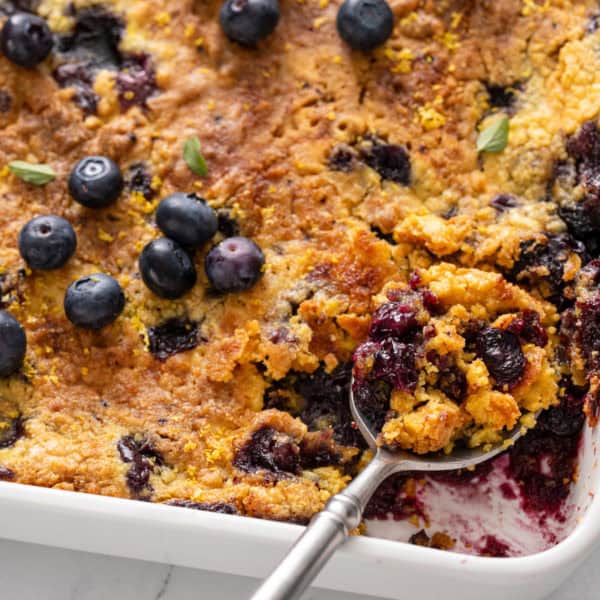









Great starting point. I found the frosting far too sweet for my tastes so I reduced the sugar to 375 grams. With that modification it is utterly perfect and won rave reviews.
Very good frosting! But I had so much extra after using for 24 cupcakes! I’m freezing the rest, but how should I defrost when it comes time to use it??
What a delicious frosting. So silky smooth So easy. A++
So glad to hear you enjoyed the recipe! Thanks so much for stopping by and leaving your feedback.
-Jamie
I’ve never made buttercream before but just made two batches of this to ice 60 cupcakes. Easy and delicious! Thank you!
I love hearing that, Lana! Thanks so much for stopping by and sharing. Happy baking!
Jamie
Can you color this buttercream or is it best not to?
You sure can! I prefer gel food coloring. It works great with this recipe. Happy baking!
Jamie
Hi i just made your frosting and its so light not overly sweet. ❤️I would like to make it slightly thicker can you please direct me on the best way to do that?
Hi Jill – I’m glad you enjoy it! Just add less milk or cream at the end and you’ll have a thicker frosting. Add only as much as you need to get the consistency you desire! Happy baking –
Jamie
Can Smart Balance margarine be substituted for the butter? I found that using lactose free butter adds more liquid to a frosting and it was too much liquid.
Hi Julie – I have not made this recipe with that substitution, so I can’t attest to the results. If you give it a try, I’d love to hear how it turns out for you. Happy baking!
Jamie